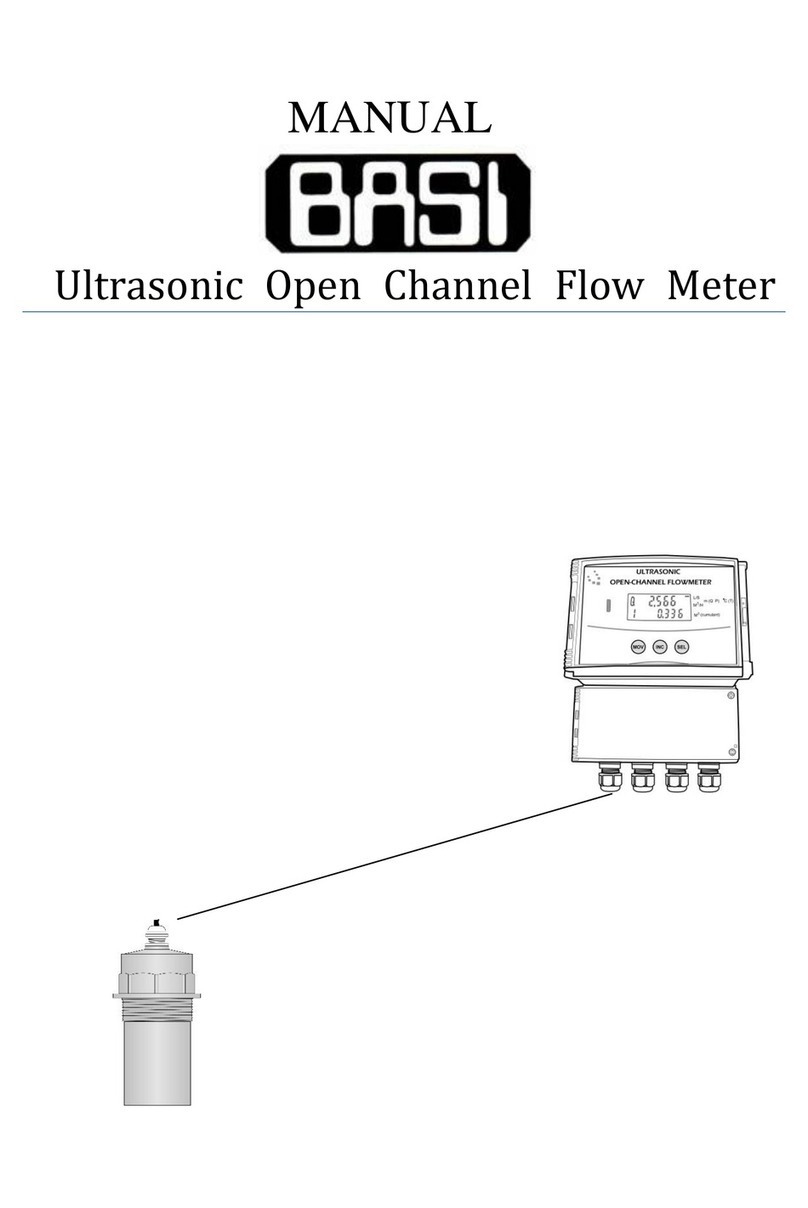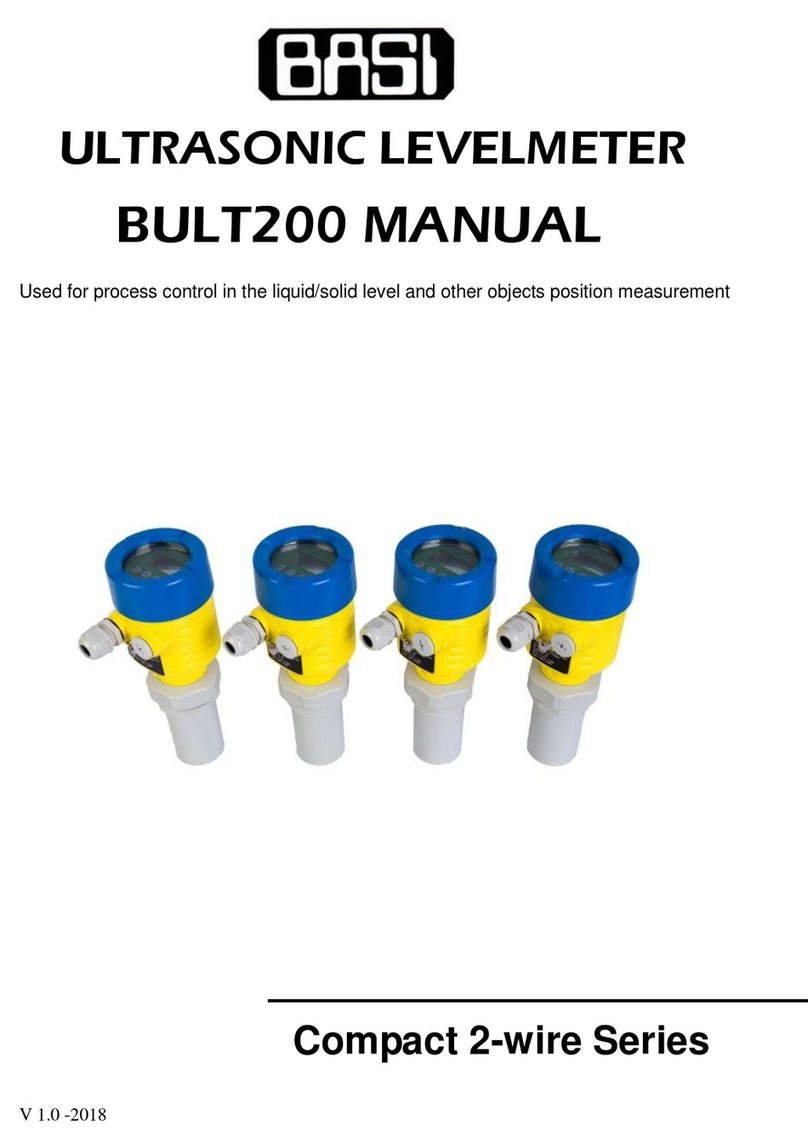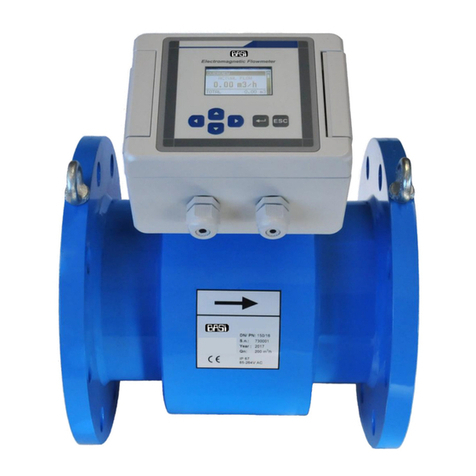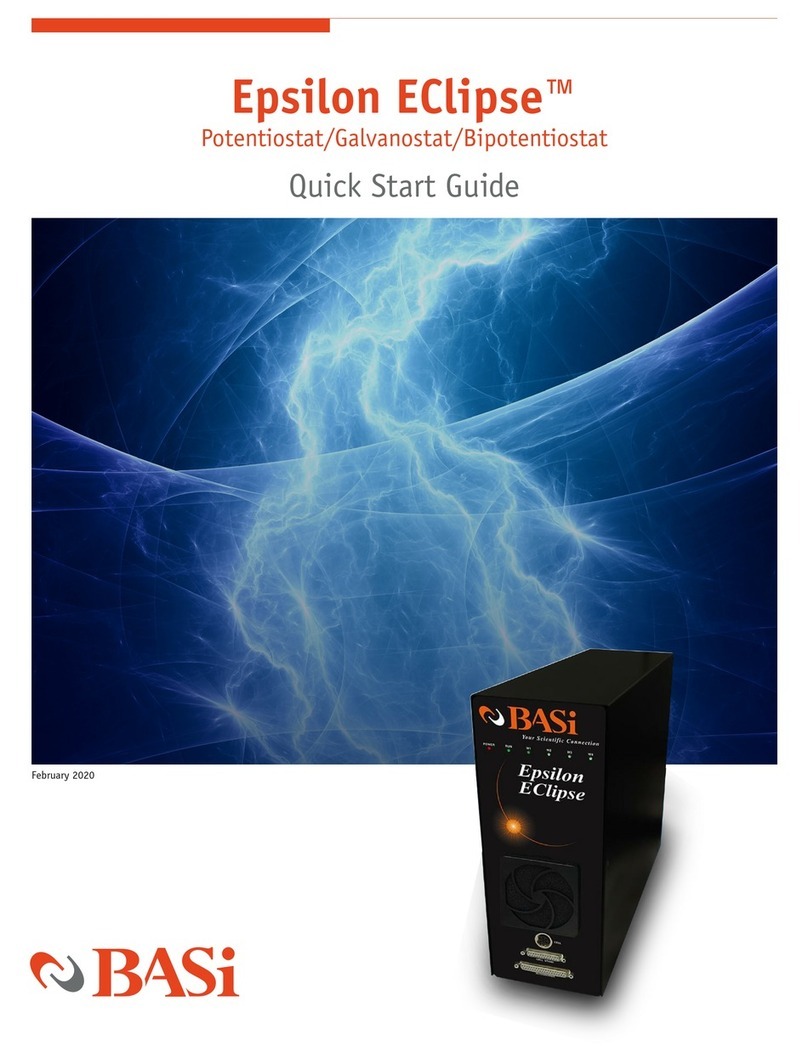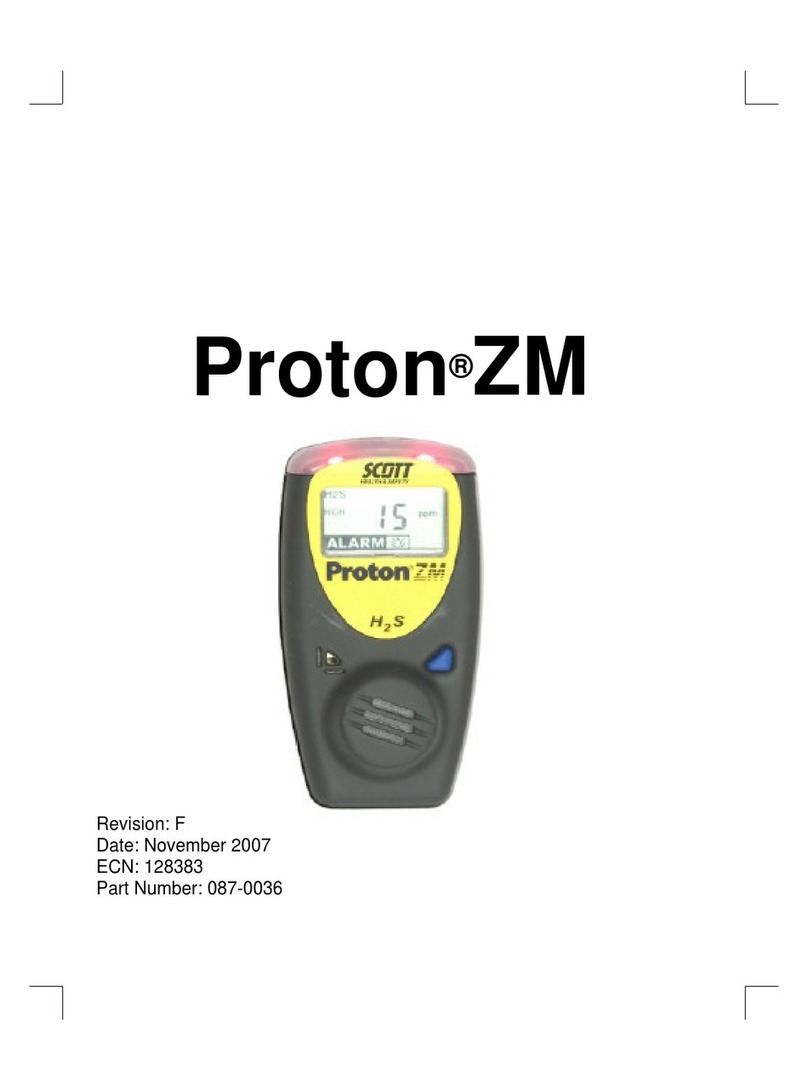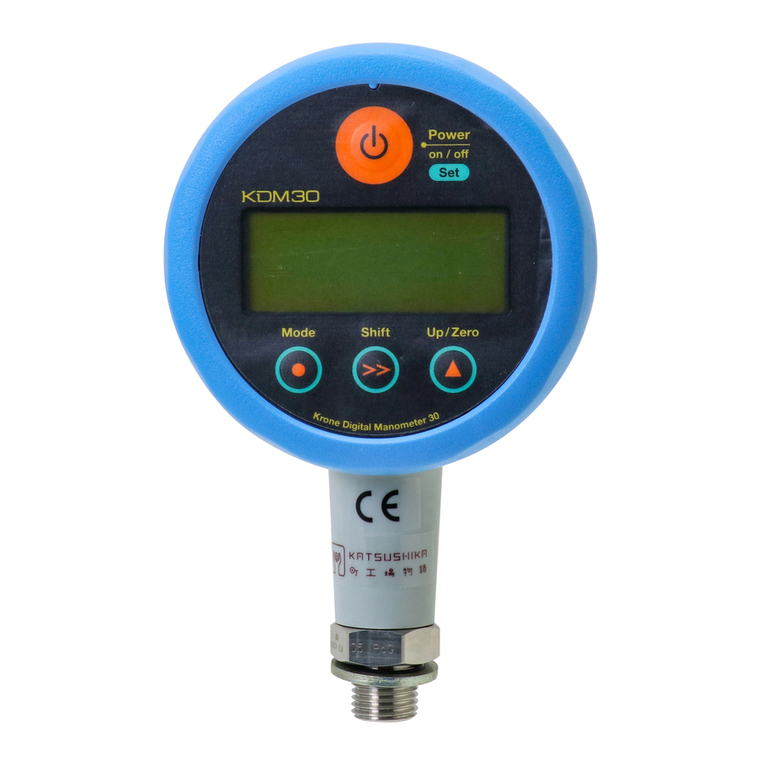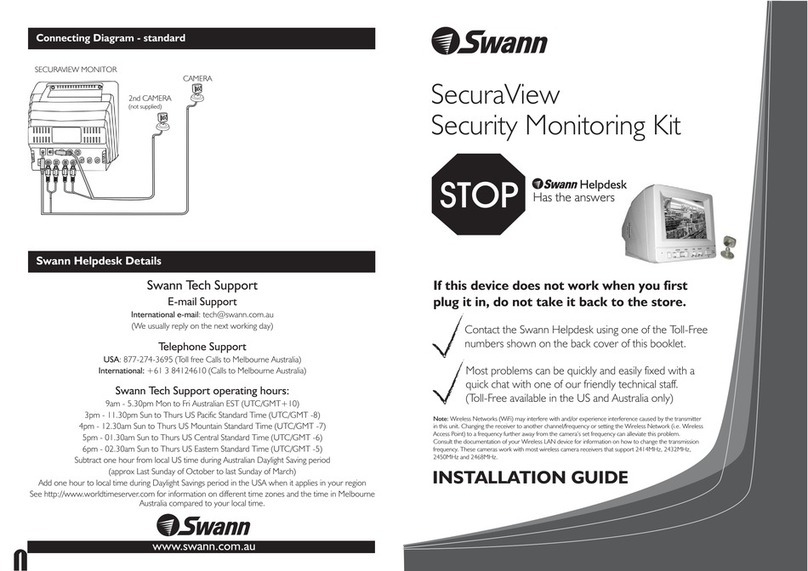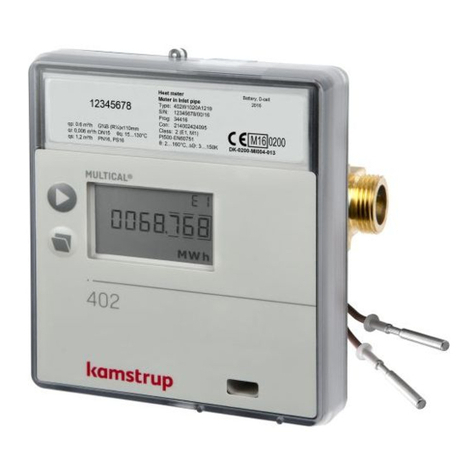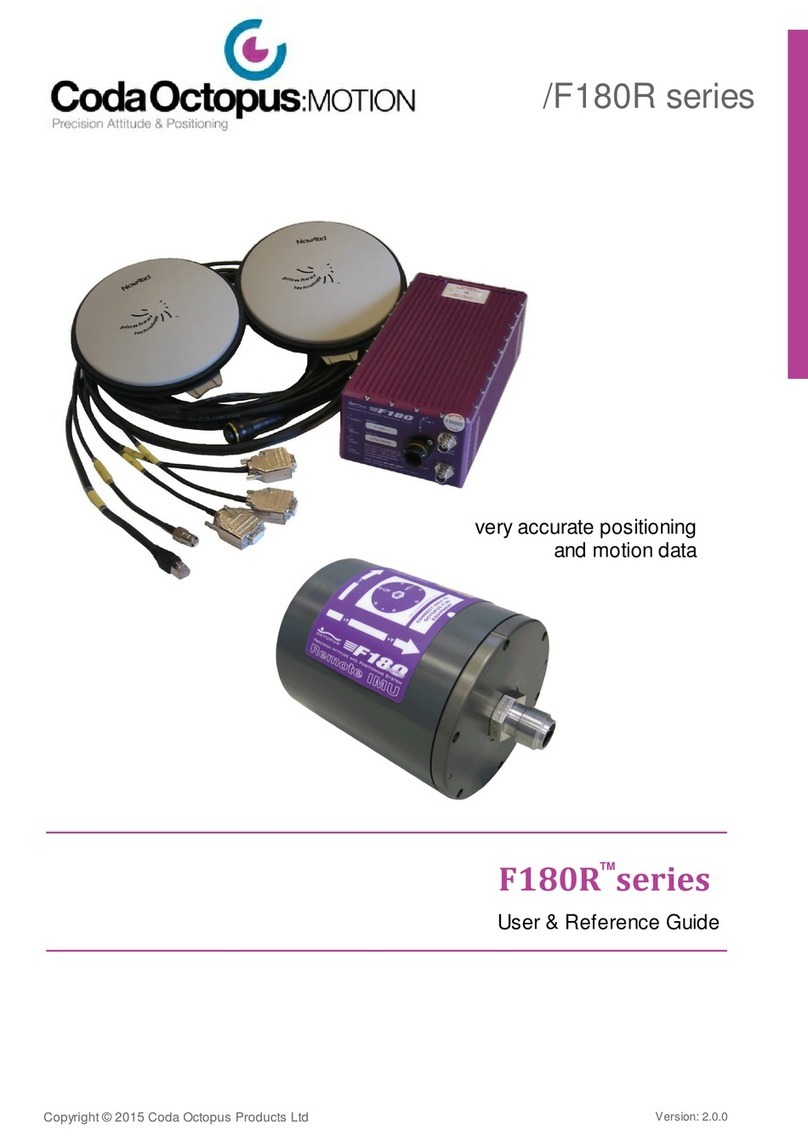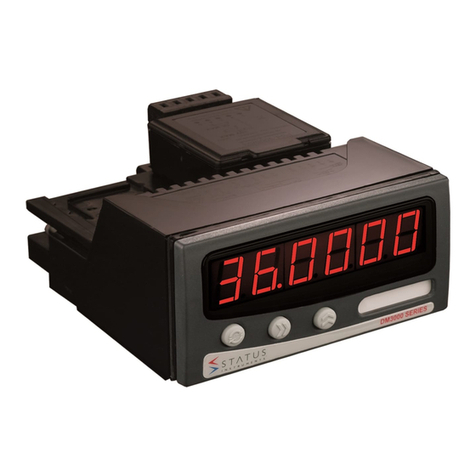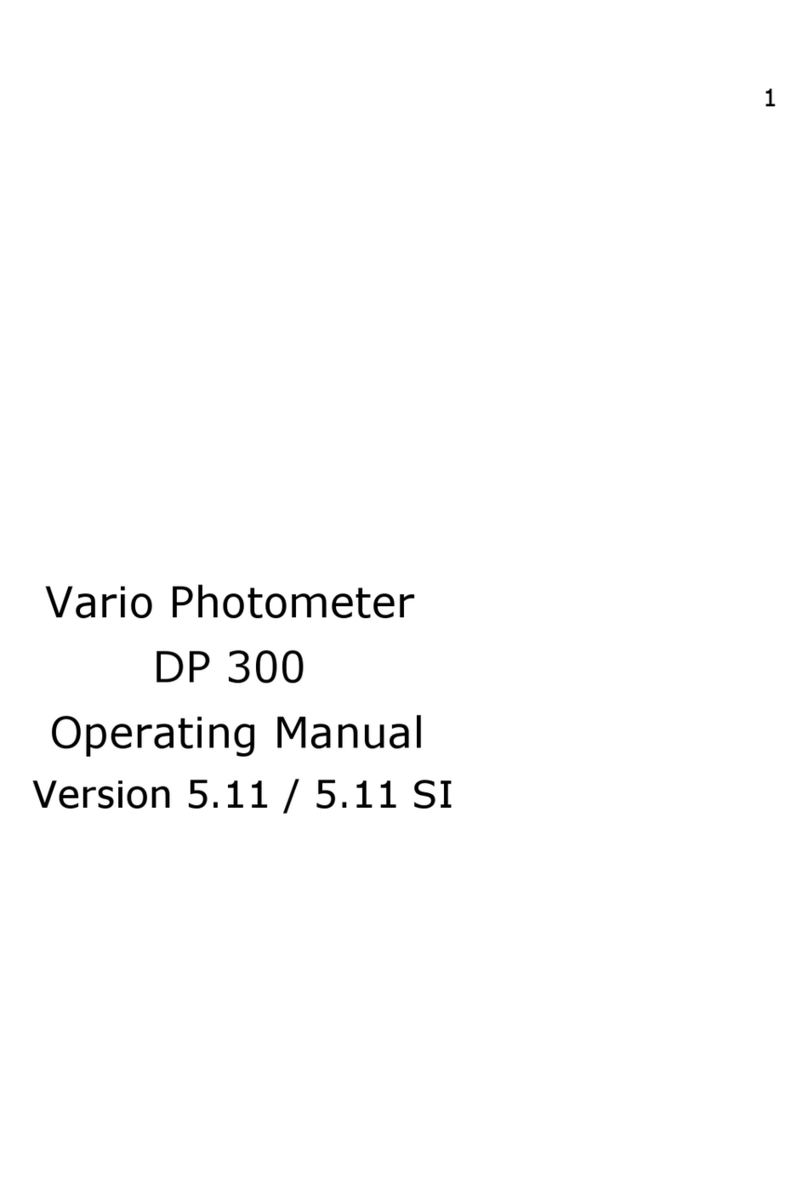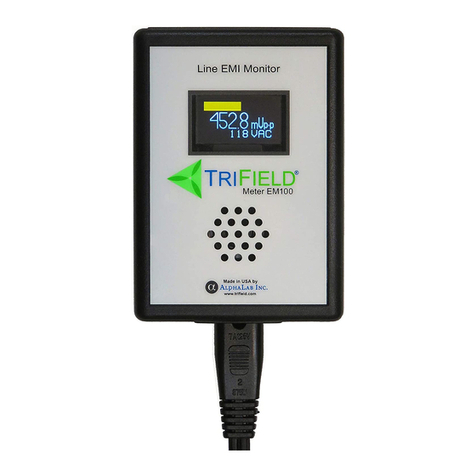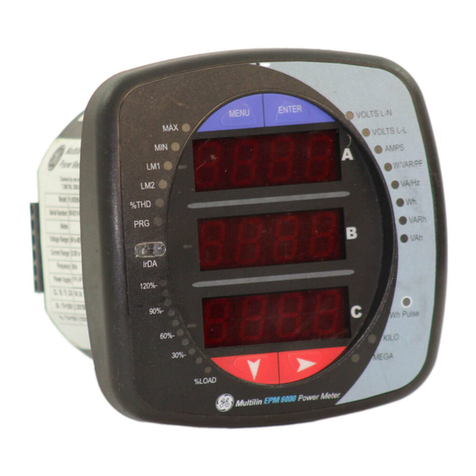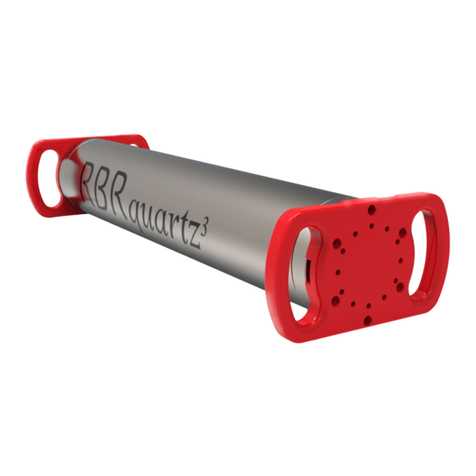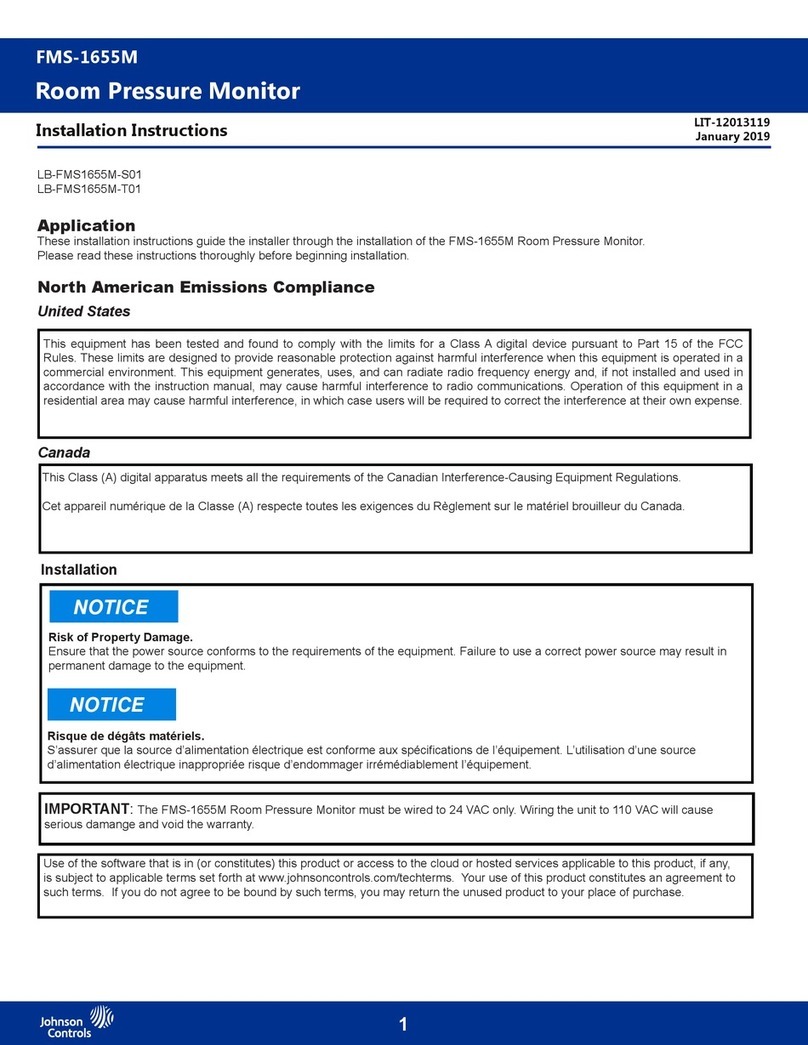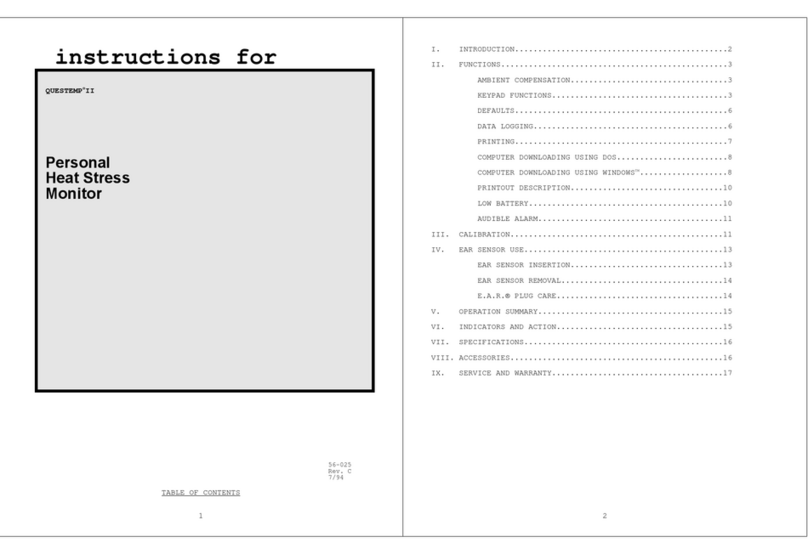BASI BLD-457 User manual

User manual
METER
BLD-457

User manual - METER BDL-457
2
•Firmware: v.1.00 or higher
•Input type: universal
•Wall mounting case IP 67
Read the user's manual carefully before starting to use the unit or software.
Producer reserves the right to implement changes without prior notice.
2017.05.18 BLD-457_INSSXEN_v.1.04.002
CONTENTS
1. BASIC REQUIREMENTS AND USER SAFETY........................................................................................3
2. GENERAL CHARACTERISTICS................................................................................................................4
3. TECHNICAL
DATA......................................................................................................................................5
4. DEVICE INSTALLATION............................................................................................................................8
4.1. UNPACKING.......................................................................................................................................
8
4.2. ASSEMBLY........................................................................................................................................8
4.3. CONNECTION METHOD.................................................................................................................10
4.4. MAINTENANCE................................................................................................................................1
9
5. FRONT PANEL DESCRIPTION................................................................................................................19
6. PRINCIPLE OF OPERATION...................................................................................................................20
6.1. MEASUREMENT MODE..................................................................................................................20
6.2. DETECTION OF THE PEAK VALUES............................................................................................21
6.3. CONTROL OF THE RELAY OUTPUTS..........................................................................................22
6.3.1. One threshold mode................................................................................................................23
6.3.2. Two thresholds mode..............................................................................................................25
7. DEVICE
PROGRAMMING.........................................................................................................................26
7.1. PROGRAMMING MENU..................................................................................................................26
7.2. PARAMETERS EDITION.................................................................................................................27
7.2.1. Numeric parameters (digit change mode)...............................................................................27
7.2.2. Numeric parameters (slide change mode)..............................................................................27
7.2.3. Switch parameters (“LIST” type).............................................................................................28
7.3. MENU DESCRIPTION.....................................................................................................................28
7.3.1. “rEL1”
menu.............................................................................................................................29
7.3.2. “bEEP” menu...........................................................................................................................31
7.3.3. “inPt” menu (common parameters).........................................................................................31
7.3.4. “inPt” menu (parameters of temperature inputs).....................................................................32
7.3.5. “inPt” menu (parameters of current and voltage inputs).........................................................32
7.3.6. ”OutP” menu............................................................................................................................34
7.3.7. ”bri” parameter.........................................................................................................................36
7.3.8. ”CoL”
menu..............................................................................................................................37

User manual - METER BDL-457
3
7.3.9. ”HOLd” menu...........................................................................................................................38
7.3.10. ”SECu” menu.........................................................................................................................39
7.3.11. ”rS” menu...............................................................................................................................39
7.3.12. ”Edit” parameter....................................................................................................................40
7.3.13. ”dEFS” parameter..................................................................................................................40
7.3.14. ”SErv” menu..........................................................................................................................40
7.4. MENU STRUCTURE........................................................................................................................41
8. OVER-CURRENT PROTECTION.............................................................................................................43
9. DISPLAYED VALUES CALCULATION....................................................................................................43
9.1. ADDITIONAL CALCULATIONS (USED CONVERSION CHARACTERISTIC)...............................43
9.1.1. Linear characteristic................................................................................................................44
9.1.2. Square characteristic..............................................................................................................44
9.1.3. Square root characteristic.......................................................................................................45
9.1.4. User defined characteristic.....................................................................................................45
9.2. EXAMPLES OF CALCULATIONS...................................................................................................46
10. THE MODBUS PROTOCOL HANDLING...............................................................................................49
10.1. LIST OF REGISTERS....................................................................................................................49
10.2. TRANSMISSION ERRORS DESCRIPTION..................................................................................55
10.3. EXAMPLES OF QUERY/ANSWER FRAMES...............................................................................55
11. DEFAULT AND USER'S SETTINGS LIST.............................................................................................58
Explanation of symbols used in the manual:
- This symbol denotes especially important guidelines concerning the
installation andoperation of the device. Not complying with the guidelines
denoted by this symbol may cause an accident, damage or equipment
destruction.
IF THE DEVICE IS NOT USED ACCORDING TO THE MANUAL THE USER IS
RESPONSIBLE FOR POSSIBLE DAMAGES.
- This symbol denotes especially important characteristics of the unit. Read
any information regarding this symbol carefully
!

User manual - METER BDL-457
4
1. BASIC REQUIREMENTS AND USER SAFETY
- The manufacturer is not responsible for any damages caused by
inappropriate installation, not maintaining the proper environmental
conditions and using the unit contrary to its assignment.
- Installation should be conducted by qualified personnel . During installation all
available safety requirements should be considered. The fitter is responsible for
executing the installation according to this manual, local safety and EMC
regulations.
- If the device is equipped with PE connector, it should be connected to PE
wire.Otherwise PE wire should be connected to GND connector.
- The unit must be properly set-up, according to the application. Incorrect
configuration can cause defective operation, which can lead to unit damage or an
accident.
- If in the case of a unit malfunction there is a risk of a serious threat to the
safety of people or property additional, independent systems and solutions
to prevent such a threat must be used.
- The unit uses dangerous voltage that can cause a lethal accident. The unit
must be switched off and disconnected from the power supply prior to
starting installation of troubleshooting (in the case of malfunction).
- Neighbouring and connected equipment must meet the appropriate standards
and regulations concerning safety and be equipped with adequate overvoltage
and interference filters.
- Do not attempt to disassemble, repair or modify the unit yourself. The unit
has no user serviceable parts. Defective units must be disconnected and
submitted for repairs at an authorized service centre.
- Do not use the unit in areas threatened with excessive shocks, vibrations, dust,
humidity, corrosive gasses and oils.
- Do not use the unit in areas where there is risk of explosions.
- Do not use the unit in areas with significant temperature variations, exposure to
condensation or ice.
- Do not use the unit in areas exposed to direct sunlight.
- Make sure that the ambient temperature (e.g. inside the control box) does not
exceed the recommended values. In such cases forced cooling of the unit must
be considered (e.g. by using a ventilator).
!
!

User manual - METER BDL-457
5
The unit is designed for operation in an industrial environment and must not
be used in a household environment or similar.
2. GENERAL CHARACTERISTICS
The BLD-457 meter is equipped with one current input (0-20mA), two voltage inputs (0-
10V and 0-150 mV), one RTD input (Pt 100/500/1000) and one TC input (thermocouple: K, S, J,
T, N, R, B, E). Temperature of cold ends is compensated automatically. RTD and TC inputs are
fully linearised. It is allowed to use only one input at the same time. Input ranges are described
in the next chapter. Result is showed on 4-digit LED display.
The device can be equipped with two or four relay (or OC type) outputs. Optionally BLD457
can be equipped with active current output, passive isolated current output or active voltage
output. Device BLD-457 is equipped with RS-485 / Modbus RTU communication interface and
sensor supply output. The meter can be ordered in two power supply versions.
The device has 4 buttons being used for main presets programming. To get high protection
level, the keyboard is mounted under transparent cover. To allowuser to change presets without
opening the cover, an IR sensor is mounted.
Remote controller keyboard is equivalent to the device keyboard (Note, that remote
controller is not a part of the BLD-457 set –it is an additional equipment).
BLD-457 can be used for controlling and regulation of processes need proportional and
threshold control like: temperature processes (heating or cooling), valves controlling or other.
3. TECHNICAL DATA
Power supply voltage
(depending on version)
External fuse (required)
Power consumption
85...230...260V AC/DC; 50 ÷ 60 Hz (separated) or
19...24...50V DC and 16...24...35V AC (separated)
T - type, max. 2 A
max. 33 VA @ 85 ÷ 260V
AC/DC max. 22 VA @ 16V ÷
35V AC max. 13 W @ 19V ÷
50V DC
Current input (20 mA)
0÷20 mA, 4÷20 mA overload protected,
input current is limited to 50 mA (typically)
Current measurement accuracy
± 0.1% @ 25°C; ± one digit (for 0÷20 mA range)
Current input resistance
< 65 W (typical 30 W)
Accepted prolonged input
overload
20%
Voltage input (10V range)
0÷5 V, 1÷5 V, 0÷10 V, 2÷10 V
Voltage measurement accuracy
± 0.1% @ 25°C; ± one digit (for 0÷10 V range)
Voltage input resistance
> 100 kW(while maintaining correct polarization)
!

User manual - METER BDL-457
6
Accepted prolonged input
overload
20%
Voltage input (150mV range)
0÷60 mV, 0÷75 mV, 0÷100 mV, 0÷150 mV
Voltage measurement accuracy
± 0.1% @ 25°C; ± one digit (for 0÷150 mV range)
Voltage input resistance
> 1,5 MW
Accepted prolonged input overload 20%
RTD input (resistive)
Pt 100, Pt 500,Pt 1000
Measurement range
-100°C ÷ +600°C
Measurement accuracy
± 0,1% @ 25°C; ± one digit
Measurement wires resistance
max. 20 W(every wire)
Thermocouple input
K, S, J, T, N, R, B, E
Thermocouple input range
K: -200˚C ÷ +1370˚C
S: -50˚C ÷ +1768˚C
J: -210˚C ÷ +1200˚C
T: -200˚C ÷ + 400˚C
N: -200˚C ÷ +1300˚C
R: -50˚C ÷ +1768˚C
B: +250˚C ÷ +1820˚C
E: -200˚C ÷ +1000˚C
Measurement accuracy
K, J, E: ± 0.1% @ 25°C; ± one digit
N: ± 0.2% @ 25°C; ± one digit
S, T, R, B: ± 0.5% @ 25°C; ± one digit
Accuracy of cold ends temperature
compensation
± 1˚C
Sensor power supply output
24V +5%, -10% / max. 100 mA, stabilized
Relay output
2 or 4 NO, 5A/250V AC (resistance)
3A/250V AC (reactance)
OC-type output
2 or 4; 30mA / 30VDC / 100mW

User manual - METER BDL-457
7
Active current output
range max. 0 ÷ 24 mA
Load resistance max.
700 W
Passive isolated current output
range max. 2.8 ÷ 24 mA
Supply voltage
Us = 9.5 ÷ 36V
Load resistance max.
(Us –9.5V) / 24mA [kW]
Active voltage output
range max. 0 ÷ 11V
Load resistance min. 2000 W
Temperature stability
50 ppm / °C
Display range
-999 ÷ 9999, plus decimal point
Communication interface
RS-485, 8N1 and 8N2, Modbus RTU, not separated
Baud rate
1200 bit/s ÷ 115200 bit/s
Display LED, 4 digit, 57 mm height, multicolor (red green) (depending on version)
LED, 4 digit, 57 mm height, red (l= 660 nm)
LED, 4 digit, 57 mm height, pure green (l= 520 nm)
LED, 4 digit, 57 mm height, blue (l= 470 nm)
Data memory non-volatile memory, EEPROM type
Protection level T-type casing:IP 67
Housing type Wall mounted, T-type
Housing material ABS (lower part) + PC (upper part)
Housing dimensions T-type casing: 230 x 140 x 96.5 mm
Operating temperature 0°C to +50°C
(depending on version) or -20°C to +50°C
Storage temperature -10°C to +70°C
(depending on version) or -20°C to +70°C
Humidity 5 to 90% no condensation
Altitude up to 2000 meters above sea level
Screws tightening max. torque 0,5 Nm
Max. connection leads cross section 2,5 mm2
Safety requirements according to: PN-EN 61010-1

User manual - METER BDL-457
8
installation category: II pollution
degree: 2
voltage in relation to ground: 300V AC insulation
resistance: >20MW
insulation strength between power supply and
input/output terminal: 1min. @ 2300V
insulation strength between relays terminal:
1min. @ 1350V
EMC according to: PN-EN 61326-1
This equipment is not intended for use in residential environments and may
not provide adequate protection to radio reception in such environments.
4. DEVICE INSTALLATION
The unit has been designed and manufactured in a way assuring a high level of user safety
and resistance to interference occurring in a typical industrial environment. In order to take full
advantage of these characteristics installation of the unit must be conducted correctly and
according to the local regulations.
- Read the basic safety requirements on page 3prior to starting
the installation.
- Ensure that the power supply network voltage corresponds to
the nominal voltage stated on the unit’s identification label.
- The load must correspond to the requirements listed in the
technical data.
- All installation works must be conducted with a disconnected
power supply.
- Protecting the power supply connections against unauthorized
persons must betaken into consideration.
4.1. UNPACKING
After removing the unit from the protective packaging, check for transportation damage. Any
transportation damage must be immediately reported to the carrier. Also, write down the unit
serial number located on the housing and report the damage to the manufacturer.
Attached with the unit please find:
- user’s manual,
- warranty,
!
!

User manual - METER BDL-457
9
4.2. ASSEMBLY
To install device on the wall, a pinholes should be made. Figure 4.1 presents
dimensions of the device and distances between holes. The back side of the device
has four mounting holes. This part of the case should be mounted to a wall by screws.
Figure 4.1. Device and assembly dimensions of the case
- Disconnect the power supply prior to starting assembly.
- Check the connections are wired correctly prior to switching the unit on.
mm
230
96.5
mm
mm
212
!
!

User manual - METER BDL-457
10
4.3. CONNECTION METHOD
Caution
- Installation should be conducted by qualified personnel . During
installation allavailable safety requirements should be considered. The fitter is
responsible for executing the installation according to this manual, local safety and
EMC regulations.
- The unit is not equipped with an internal fuse or power supply circuit
breaker.Because of this an external time-delay cut-out fuse with a small nominal
current value must be used (recommended bipolar, max. 2A) and a power supply
circuitbreaker located near the unit. In the case of using a monopolar fuse it must be
mounted on the phase cable (L).
- The power supply network cable diameter must be selected in such
a way that inthe case of a short circuit of the cable from the side of the unit the cable
shall be protected against destruction with an electrical installation fuse.
- Wiring must meet appropriate standards and local regulations and
laws.
- In order to secure against accidental short circuit the connection
cables must beterminated with appropriate insulated cable tips.
- Tighten the clamping screws. The recommended tightening torque
is 0.5 Nm.Loose screws can cause fire or defective operation. Over tightening can
lead to damaging the connections inside the units and breaking the thread.
- In the case of the unit being fitted with separable clamps theyshould
be insertedinto appropriate connectors in the unit, even if they are not used for any
connections.
- Unused terminals (marked as n.c.) must not be used for
connecting anyconnecting cables (e.g. as bridges), because this can cause
damage to the equipment or electric shock.
- If the unit is equipped with housing, covers and sealing to, protecting
againstwater intrusion, pay special attention to their correct tightening or clamping.
In the case of any doubt consider using additional preventive measures (covers,
roofing, seals, etc.). Carelessly executed assembly can increase the risk of electric
shock.
- After the installation is completed do not touch the unit’s connections
when it isswitched on, because it carries the risk of electrical shock.
Due to possible significant interference in industrial installations appropriate measures
assuring correct operation of the unit must be applied. To avoid the unit of improper
indications keep recommendations listed below.
–Avoid running signal cables and transmission cables together with power supply cables and
cables controlling inductive loads (e.g. contactors). Such cables should cross at a right
angle.
!

User manual - METER BDL-457
11
–Contactor coils and inductive loads should be equipped with interference protection systems,
e.g. RC-type.
–Use of screened signal cables is recommended. Signal cable screens should be connected
to the earthing only at one of the ends of the screened cable.
–In the case of magnetically induced interference the use of twisted pair of signal cables is
recommended. Twisted pair (best if shielded) must be used with RS-485 serial transmission
connections.
–In the case of measurement or control signals are longer than 30m or go outside of the
building then additional safety circuits are required.
–In the case of interference from the power supply side the use of appropriate interference
filters is recommended. Bear in mind that the connection between the filter and the unit
should be as short as possible and the metal housing of the filter must be connected to the
earth with the largest possible surface. The cables connected to the filter output must not be
run with cables with interference (e.g. circuits controlling relays or contactors).
Connections of power supply voltage and measurement signals are executed using the
screw connections on the back of the unit’s housing.
Figure 4.2. Method of cable insulation replacing and cable terminals
Figure 4.3. Terminals description (two relay outputs)
6-7
mm

User manual - METER BDL-457
12
Figure 4.4. Terminals description (two OC-type outputs)
Figure 4.5. Terminals description (one relay and one OC-type output)
Figure 4.6. Terminals description (four relay outputs)
Figure 4.7. Terminals description (four OC-type outputs)

User manual - METER BDL-457
13
Figure 4.8. Terminals description (two relay, one OC-type and passive current outputs)
Figure 4.9. Terminals description (two relay, one OC-type and active current outputs)
Figure 4.10. Terminals description (two relay and active voltage outputs)

User manual - METER BDL-457
14
Figure 4.11. Connection of 2-wire current converters
18
19
20
21
22
13
14
15
16
17
+
-
internally connected
+
-
External power supply
18
19
20
21
22
+
-
24
V DC
+
-
18
19
20
21
22
13
14
15
16
17
internally connected
-
+
-
+
External power supply
18
19
20
21
22
24
V DC
+
-
+
-

User manual - METER BDL-457
15
Figure 4.12. Connection of 3-wire current converters
Figure 4.13. Connection of voltage converters
Temperature sensor can be connected to the device in typical 4-wire circuit (Figure 4.14a) or
3-wire circuit (Figure 4.14b). Due to precision of measurement 4-wire circuit is recommended.
If 2 wire circuit is used, the resistance of wires should be as small as possible, to avoid
of measurement errors. Measured value can be corrected (constant correction) using
„toFS” parameter from menu „inPt”. Due to low precision 2-wire connection is not
recommended.
When 4-wires or 2-wires connection is used, the resistance of particular wires (Ra ÷
Rd) CAN BE DIFFERENT. When 3-wires connection is used, the resistance of particular wires
(Ra ÷ Rd) MUST BE IDENTICAL to enable proper compensation of it's resistance. The
resistance of particular wire should not be greater than 20 W.
Figure
4.14.
Connection of RTD sensors:
a) 4-wires circuit; b) 3-wires circuit; c) 2-wires circuit
RTD
Ra, Rb, Rc, Rd can be different
RTD
Ra= Rc= Rd
RTD
Ra, Rdcan be different
18
19
20
21
22
13
14
15
16
17
internally connected
-
+
-
+
+
External power supply
18
19
20
21
22
24
V DC
+
-
+
-
+

User manual - METER BDL-457
16
The connection circuit should not be changed while unit is powered. While using TC,
RTD or voltage inputs (0-150mV) the device is able to detect wire breaks. Wire breaks
are detected within about 2 seconds. For connectors number 19 and 20 of RTD input
it may take up to about 7 seconds. During detection measurements will be incorrect. If wire
break is detected "S.Err" (sensor error) message is displayed.
L N
Figure 4.15. Connection of power supply and relays
Contacts of relay outputs are not equipped with spark suppressors. While use the
relay outputs for switching of inductive loads (coils, contactors, power relays,
electromagnets, motors etc.) it is required to use additional suppression circuit
(typically capacitor 47nF/ min. 250VAC in series with 100R/5W resistor), connected in
parallel to relay terminals or (better) directly on the load. In consequence of using the
suppression circuit, the level of generated electromagnetic disturbances is lower, and the
life of relay contacts rises.
a) b)
Depending on version:
85...
230
V AC/DC or
...260
19...
24
...50
16...
V DC;
24
V AC
...35
1
2
3
4
R1
5
6
R2
7
8
R3
9
10
R4
L
N
FUSE
FUSE
!

User manual - METER BDL-457
17
L L
N N
Figure 4.16. Examples of suppression circuit connection:
a) to relay terminals; b) to the inductive load
Figure 4.17. Example of OC-type outputs connection
3
4
!
9
10
Uo
16
17
OC
+
Voltage input
V
24
-
Logic
controller
+
-
-
+
9
10
Uo
16
17
OC
-
+
+
-
R 2k2
LED 10 mA
!
3
4

User manual - METER BDL-457
18
Figure 4.18. Example of active current outputs connection
(for device with active current output only)
Figure 4.19. Example of passive current outputs connection
(for device with passive current output only)
Figure 4.20. Example of active voltage outputs connection
(for device with active voltage output only)
4.4. MAINTENANCE
The unit does not have any internal replaceable or adjustable components available to the
user. Pay attention to the ambient temperature in the room where the unit is operating.
Excessively high temperatures cause faster ageing of the internal components and shorten the
fault-free time of the unit's operation.
11
12
ACTIVE
current
output
(
optional
)
-
+
+
current input
0-20
mA
-
Logic controller
11
12
ACTIVE
current
output
(
optional
)
-
+
+
current input
0-20
mA
-
Logic controller
11
12
ACTIVE
current
voltage
(
optional
)
-
+
+
voltage input
0-10
V
-
Logic controller

User manual - METER BDL-457
19
In cases where the unit gets dirty do not clean with solvents. For cleaning use warm water with
small amount of detergent or in the case of more significant contamination ethyl or isopropyl
alcohol.
Using any other agents can cause permanent damage to the housing.
Product marked with this symbol should not be placed in municipal waste. Please
check local regulations for disposal of electronic products.
5. FRONT PANEL DESCRIPTION
Symbols and functions of push-buttons:
ESC Symbol used in the manual: [ESC/MENU]
MENU Functions:
•Enter to main menu ( press and hold by at least 2 sec.)
•Exit the current level and Enter to previous menu (or measure mode)
•Cancel the changes made in parameter being edited
Symbol used in the manual: [ENTER]
ENTER Functions :
•Start to edit the parameter
•Enter to the sub-menu,
•Confirmation of changes made in parameter being edited
Symbol used in the manual: [^] [v] Functions :
•Change of the present menu,
•Modification of the parameter value,
•Change of the display mode.
MENU
ESC
ENTER
R3
R4
R1
R2
infrared
receiver
Thresholds exceeding
LED indicators (
R
)
display
programming
pushbuttons
!

User manual - METER BDL-457
20
6. PRINCIPLE OF OPERATION
After turning the power supply on, device ID and software version are showed on the
display, next the controller goes to the measurement mode.
6.1. MEASUREMENT MODE
In the measure mode, the measurement results, converted over selected characteristic,
are displayed on the LED display. The measurement range equal to the nominal range is called:
nominal measurement range, and the measurement range equal to the extended nominal
range is called: permissible measurement range (Figure 6.1, 6.2).
For temperature inputs (TC and RTD) there is linear characteristic available only. For
this kind of inputs nominal measurement range, and permissible measurement
range are the same (no range extension available, Figure 6.3).
Figure 6.1. Definitions of measurement ranges in mode 4 ÷ 20mA
If the result of measurement exceeds the permissible measurement range, warning ”-Hi-
”or ”-Lo-” is displayed rather than input signal, depending on exceeded value (see description
of “Lo r” and “Hi r” parameters, paragraph ”inPt” menu). The warning can be effect of
measurement circuit malfunction. In that case “-Lo-”means shortcut and “-Hi-” means break of
measurement circuit. If sensor failure will be detected (e.g. broken wires), then ”S.Err” warning
will be displayed.
”
Lo r
” p
arameter
”
Hi r
” p
arameter
4
mA
20
mA
permissible measurement range
nominal measurement range
Figure
6.2
.
Definitions of measurement ranges in mode 0
÷ 150
mV
If the measurement value do not exceeds
permissible measurement range
but
displayed value exceeds range -999 ÷ 9999, the warning ”
-
Ov
-
” is displayed rather
than the calculated result.
”
Hi r
” parameter
mV
0
mV
150
permissible measurement range
nominal measurement range
Table of contents
Other BASI Measuring Instrument manuals
